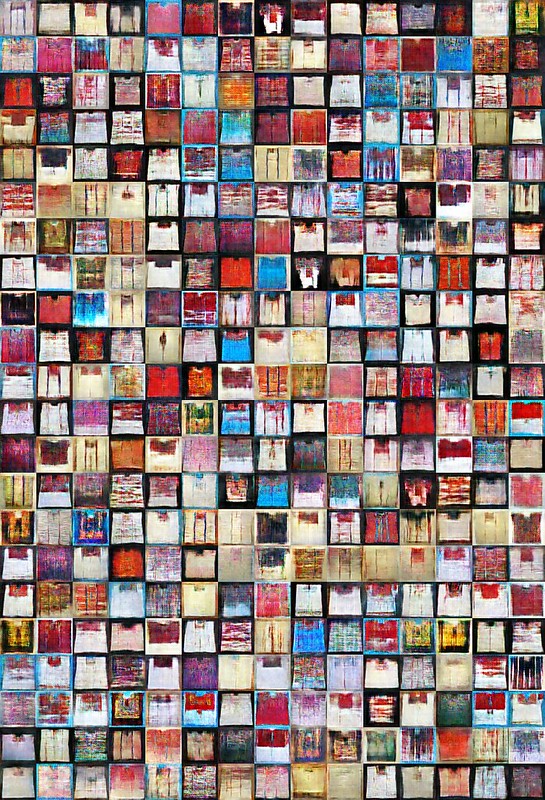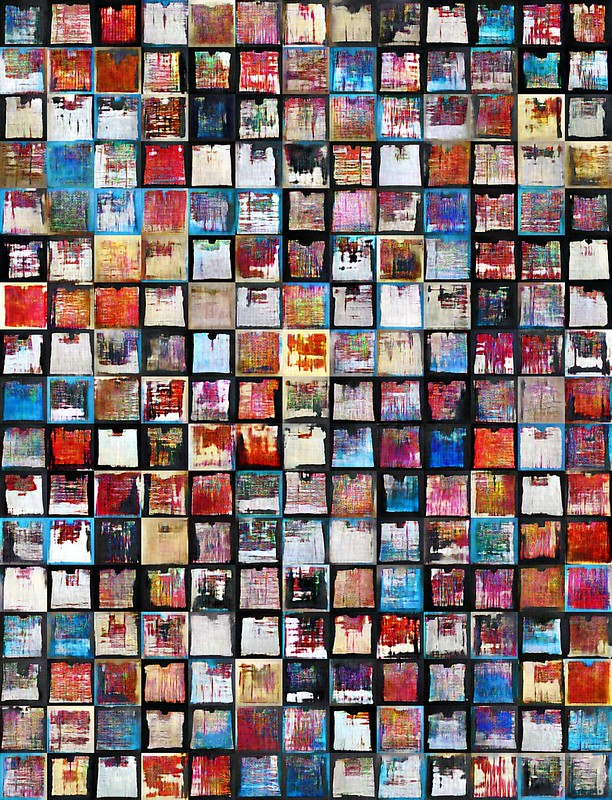Latent Fabrics (2018) began with a simple question: can machine vision identify what makes up a huipil and hence from which region it comes from? Is there even such a distinction, or do we wish there to be one? This evolved into how a generative model would extract the essence of these art pieces, in turn placing them in an intertwined latent space.
While for some are only art pieces, huipils constitute a greater part of the Latin-American culture. They tell the stories, feelings, dreams, hopes, and legends from different cultures and regions of each country. Can a generative model replicate and highlight these stories? Or will it only diminish them?
Many cultures and subcultures in Latin America do not differ by much. In fact, what separates many is only arbitrary border lines between nations. Recent geopolitical events have led us to believe that we aren’t similar at all, and I hope my piece reminds us this is not the case.
The submitted work shows the result of training of a DCGAN on a curated list of 641 images of huipils from Mexico and Guatemala, taken from Karen Elwell’s Flickr collection (with permission). I curated the training images from a collection of almost 2000 images, and although more images are warranted for this kind of work, this is still the largest collection of huipils that can be found online.
The generated images in the collage were selected as the algorithm was getting trained, as well as after it was trained, and merged afterward. The input images were center-cropped to be of size 64×64, and each generated huipil was of the same size. I repurposed the DCGAN algorithm from Taehoon Kim’s DCGAN-tensorflow and trained it for 430 epochs, which amounted to a bit over 48 hours on a GeForce 980M.
Images courtesy of Diego Porres.

